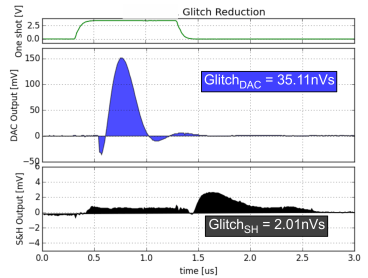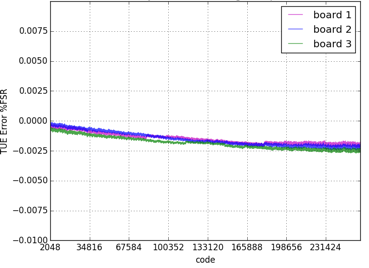JAJS261B July 2007 – January 2018 DAC8881
PRODUCTION DATA.
- 1 特長
- 2 アプリケーション
- 3 概要
- 4 改訂履歴
- 5 Pin Configuration and Functions
- 6 Specifications
-
7 Detailed Description
- 7.1 Overview
- 7.2 Functional Block Diagram
- 7.3 Feature Description
- 7.4 Device Functional Modes
- 8 Application and Implementation
- 9 Power Supply Recommendations
- 10Layout
- 11デバイスおよびドキュメントのサポート
8.2.1.3 Application Curves
Glitch reduction and total unadjusted error (TUE) plots of the solution presented in Sample & Hold Glitch Reduction for Precision Outputs Design Guide (TIDU022) is shown in the following plots. The glitch area is reduced from 35.11 nVs to 2.01 nVs.


| CH = 8.2 nF | RS = 14.7 Ω |
(20000h-1FFFFh 18-bit Data)
(Top) Digital Signal One-Shot Pulse; (Middle) DAC Output Glitch; (Bottom) S&H Output Glitch